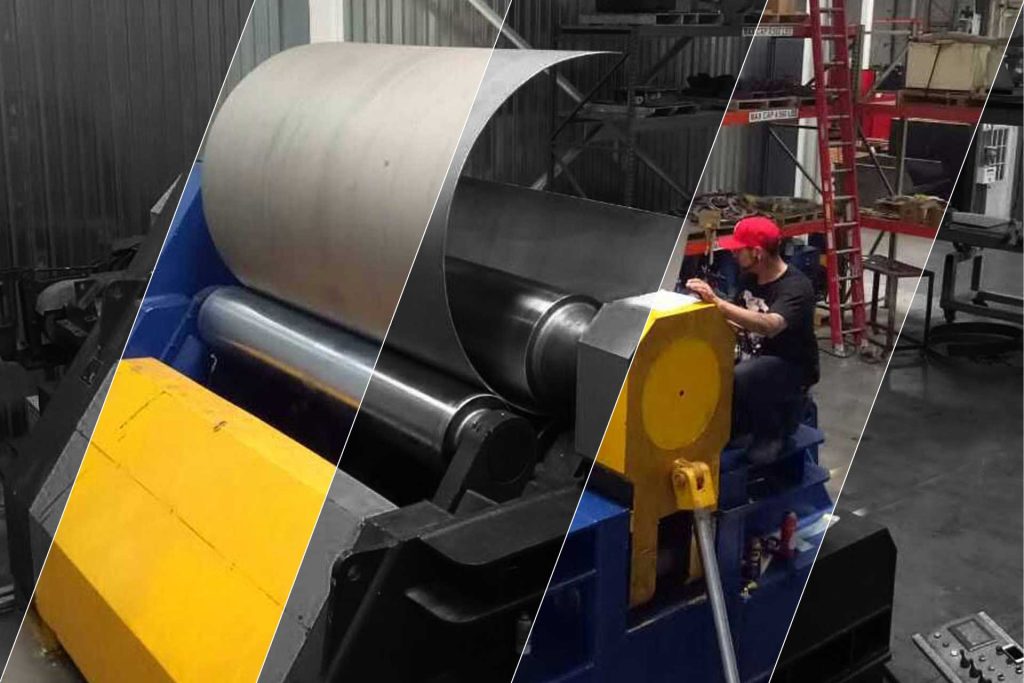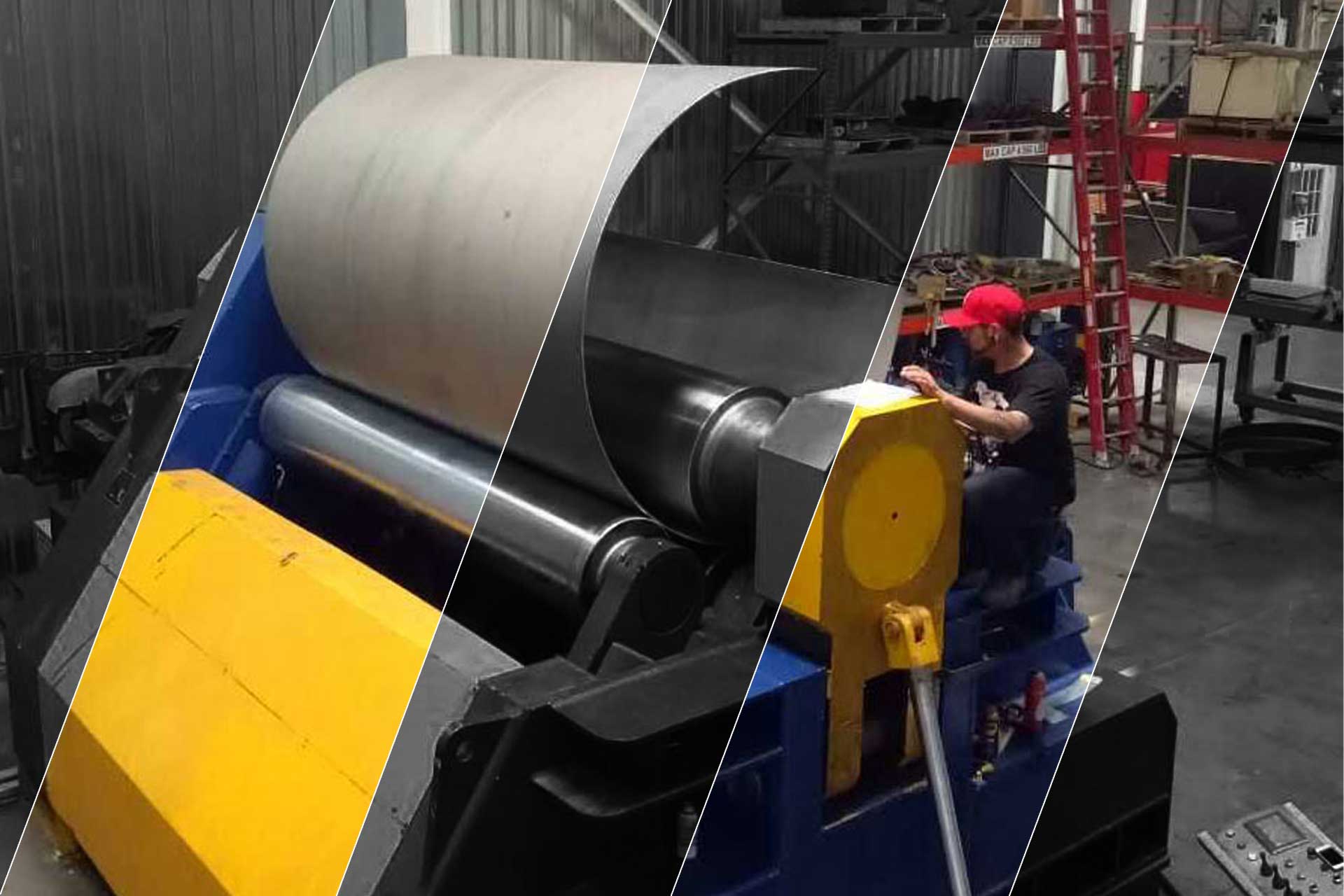Plate roll bending process

Plate rolling is one of the most complex metal fabrication processes. Changing just one variable directly affects numerous others. Same as a profile bending machine, when a plate rolling machine is set up, springback is a major factor, as is the material’s chemical composition and its work-hardening characteristics.
Most company capacity charts relate to mild steel rolling/bending specifications. Generally, when rolling stainless steel, you should deduct a third off the capacity but increase the capacity by a fourth when rolling aluminum. The grade of material will also dictate roll crowning. Stainless steel needs more crowning than mild steel whereas aluminum requires zero crowning. The crowning prevents the barrel effect when rolling a cylinder.
Each metal plate sheet has its own yield strength, choose the size of the plate rolling machine, and the yield strength of various plates is related, usually, China’s plate rolling machine is based on the Q235 metal plate refer, so a plate bending machine with a bending capacity of 20mm*2500mm can roll 20MM thick Q235 plate, then the yield strength of stainless steel, probably in the yield of Q235 plate About 1.6 times the strength, when bending stainless steel with a rolling machine with a rolling capacity of 20mm, It can only bend 12mm thickness.
Some people are worried about the yield strength of stainless steel plates, then the plate rolling machine roller will have to undergo special treatment to deal with the hardness of stainless steel. In fact, the plate rollers are manufactured for a long period of use. The standard model of plate rolling machine, roll stainless steel is no problem.
Basic Material Considerations
When rolled into a ferrule or arched shape, the sheet or plate will spring back a certain amount, and that amount depends on myriad factors.
Regardless, some basic factors usually apply:
- Thinner sheet—more springback
- Larger radius—more springback
- Smaller radius-to-thickness ratio—less springback
- Bending sheet in fewer steps (when rolls move to produce a different radius)—less springback
- High yield strength—more springback
- High elastic modulus—less springback
Work-hardening factors
Work-hardening factors into the equation as well, especially when rolling material like stainless steel. Consider some classic stainless materials, ASTM 304 and 316, which have certificates that often indicate a yield strength close to 220 MPa (about 32,000 PSI). When a sheet of this material is rolled, its yield strength increases proportionally to the number of bending steps, until the yield strength reaches a value close to 360 MPa (50,000 PSI). This is why such work-hardening (or self-hardening) phenomena should be taken into account when evaluating the rolling capacity of a particular machine.
Material’s chemical composition
The material’s chemical composition influences yield strength and hardness. A brief look at a sheet’s certificate can tell a fabricator a lot about how the metal will behave in the plate roll. Key elements to observe include carbon (C), nickel (Ni), chromium (Cr), manganese (Mn), molybdenum (Mo), and silicon (Si). More carbon makes steel harder. So does more chromium, the alloying element in stainless steel. Both manganese and molybdenum can increase hardenability. And so can silicon, which can also decrease elongation characteristics.
Changing the amount of each element alters a sheet’s rolling characteristics, as well as rolling capacity considerations. An ASTM 304 stainless steel the identical size and thickness of a carbon sheet obviously will roll very differently. But even for two sheets of 304 stainless with certificates showing identical chemical makeup, the rolling results still may be different, thanks to different heat-treatment processes.
